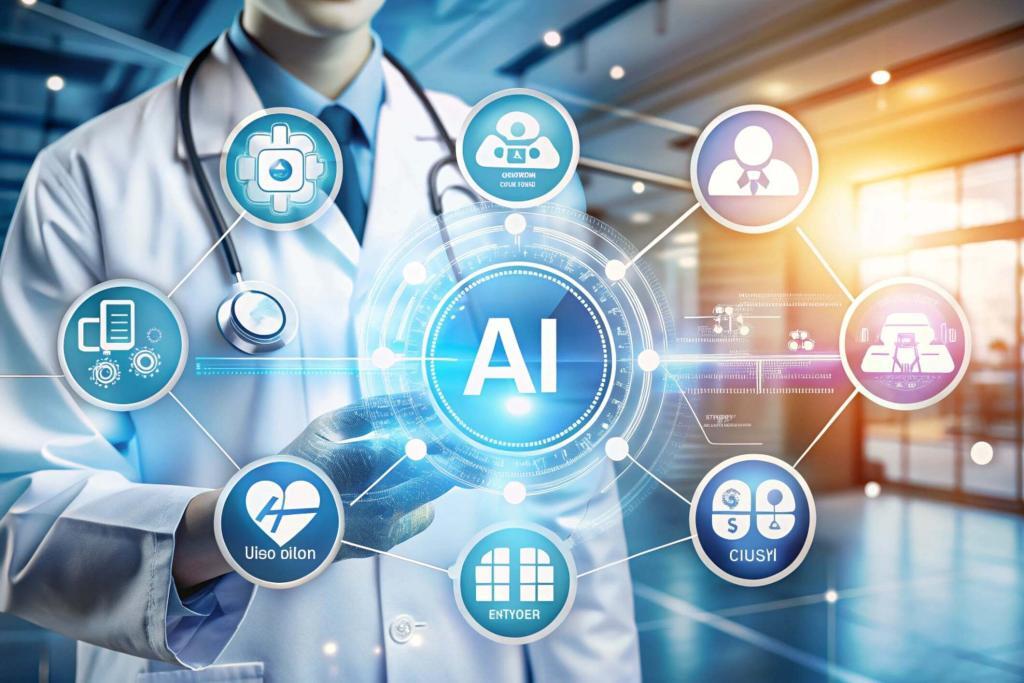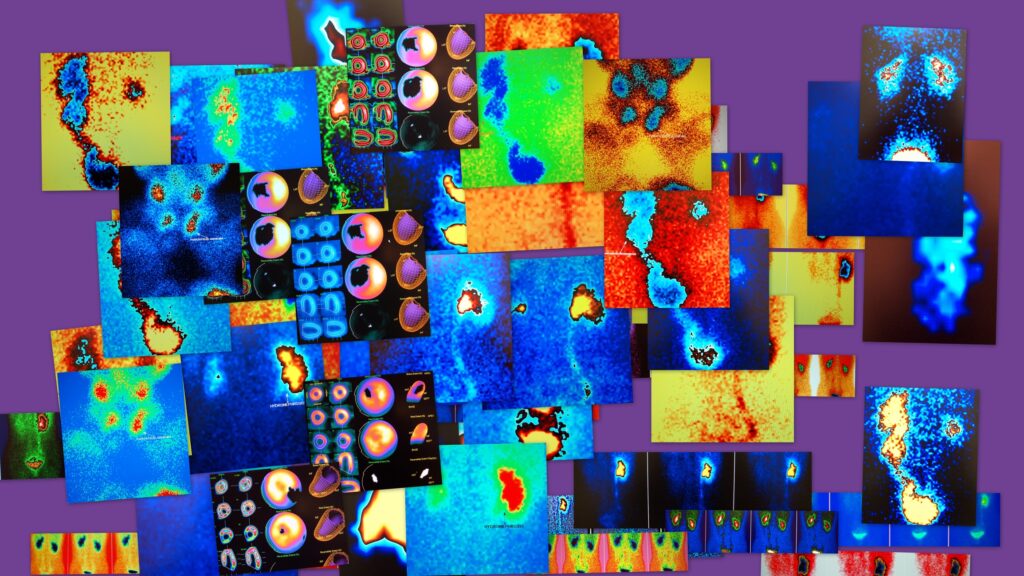Natural Language Processing (NLP) has become a fundamental component of artificial intelligence, enabling machines to understand, interpret, and generate human language. NLP spans a wide array of tasks, from text understanding with sophisticated language models such as GPT and BERT to speech recognition, language generation, and sentiment analysis. This article investigates these key areas, offering an in-depth exploration of the technologies and methodologies shaping the future of human-computer interaction.
Introduction to Natural Language Processing
Natural Language Processing (NLP) sits at the intersection of linguistics and artificial intelligence, aiming to bridge the gap between human language and machine understanding. Its core objective is to enable computers to process and interpret human language in a manner that is both meaningful and actionable. Over the years, NLP has evolved significantly, driven by advances in machine learning, deep learning, and the availability of vast datasets.
In this article, we will explore four major aspects of NLP: Text Understanding, Speech Recognition, Language Generation, and Sentiment Analysis. Each of these domains represents a crucial facet of how machines are increasingly able to engage with human language across different mediums and tasks.
Text Understanding: The Rise of Language Models like GPT and BERT
Text understanding is perhaps the most foundational aspect of Natural Language Processing. It refers to a machine’s ability to comprehend, analyse, and extract meaning from textual data. Modern language models, such as GPT (Generative Pre-trained Transformer) and BERT (Bidirectional Encoder Representations from Transformers), have revolutionised this field, enabling computers to perform a wide range of tasks with a high degree of accuracy.
GPT: Generative Language Models
GPT, developed by OpenAI, is a generative language model that excels in producing coherent and contextually relevant text based on a given input prompt. GPT is built on the transformer architecture, a model that processes text in parallel, capturing long-range dependencies and context effectively.
One of the key strengths of GPT models is their ability to generate human-like text, making them suitable for applications like conversational agents, content creation, and even coding assistance. GPT models work through a process of pre-training on vast amounts of text data, followed by fine-tuning specific tasks to improve their performance.
BERT: Deep Contextual Understanding
In contrast to GPT, which is primarily generative, BERT is designed to understand text. BERT’s key innovation is its bidirectional nature, meaning it reads text both forwards and backwards, allowing it to better understand the context and nuances of words within sentences. BERT models are particularly effective in tasks such as question answering, sentence completion, and named entity recognition.
BERT’s architecture allows it to capture the intricate relationships between words, making it ideal for applications that require deep comprehension of language, such as information retrieval and search engines. Google’s search algorithm, for example, incorporates BERT to improve the relevance of search results by better understanding user queries.
Speech Recognition: Converting Speech to Text
Speech recognition is another critical area within NLP, focusing on converting spoken language into text. This technology powers applications like virtual assistants, transcription services, and voice-activated controls. The development of sophisticated speech recognition models has been instrumental in making voice interfaces more accurate and accessible.
The Mechanism of Speech Recognition
At its core, speech recognition involves breaking down audio signals into phonetic units, matching them to corresponding words, and then reconstructing sentences. Modern systems utilise deep learning models, particularly recurrent neural networks (RNNs) and convolutional neural networks (CNNs), to process audio data.
In recent years, transformer models, such as those used in GPT and BERT, have also been adapted for speech recognition tasks. These models are particularly effective at handling the variability and complexity of human speech, which includes accents, intonations, and background noise.
Applications of Speech Recognition
The applications of speech recognition are vast and growing. Some of the most notable examples include:
- Virtual Assistants: Apple’s Siri, Amazon’s Alexa, and Google Assistant use speech recognition to understand and respond to user commands.
- Transcription Services: Platforms like Otter.ai and Google’s transcription services use speech-to-text technologies to convert audio content into written text, making meetings and lectures easily searchable and accessible.
- Accessibility: Speech recognition is also a key tool for individuals with disabilities, enabling them to interact with technology through voice commands instead of relying on traditional input devices.
Language Generation: Chatbots, Translation, and Summarisation
Language generation refers to the ability of a system to produce human-like language in the form of text. From generating dialogue in chatbots to producing coherent summaries and translating languages, this area of NLP is central to creating interactive and dynamic AI systems.
Chatbots and Conversational Agents
Chatbots have become increasingly prevalent, providing customer service, guiding users through websites, or even offering companionship. These systems rely on sophisticated language generation algorithms to engage in meaningful and context-aware conversations with users.
GPT models, as mentioned earlier, are commonly used in the development of chatbots due to their ability to generate human-like responses. They can be fine-tuned for specific domains, such as customer support or healthcare, enabling more personalised and efficient interactions.
Machine Translation
Machine translation software another vital application of language generation, seeks to automatically translate text from one language to another. Early systems relied heavily on rule-based approaches, which often resulted in inaccurate or awkward translations. Today, neural machine translation (NMT) models, such as Google Translate and Microsoft Translator, use deep learning to generate translations that are much more fluent and accurate.
These models analyse large datasets of parallel texts (texts in different languages that correspond to one another) to learn how to map sentences from one language to another. Transformers have also been instrumental in this domain, providing context-aware translations that better reflect the nuances of human language.
Text Summarisation
Text summarisation is the process of condensing a large body of text into a shorter version while retaining its essential meaning. This task can be particularly challenging, as it requires the system to understand the main points of the text and rephrase them concisely. There are two main approaches to text summarisation: extractive and abstractive.
- Extractive Summarisation: This method involves selecting and combining key sentences or phrases directly from the original text. While this approach is easier to implement, the summaries can sometimes feel disjointed or incomplete.
- Abstractive Summarisation: In contrast, abstractive summarisation generates new sentences that paraphrase the original text. This approach is more complex but often results in more coherent and natural summaries.
Sentiment Analysis: Determining Sentiment or Tone of Text
Sentiment analysis, also known as opinion mining, involves analysing text to determine the sentiment behind it—whether it’s positive, negative, or neutral. This technique is widely used in industries like marketing, finance, and customer service to gauge public opinion, monitor brand reputation, and even predict market trends.
How Sentiment Analysis Works
At a basic level, sentiment analysis works by assigning scores to words or phrases in a text, indicating their emotional weight. For instance, words like “excellent” or “happy” might be assigned a positive score, while “terrible” or “frustrating” would receive a negative score. Machine learning models, often leveraging pre-trained language models like BERT, then analyse the overall sentiment of the text by aggregating these scores.
Advanced sentiment analysis models go beyond simple word-level analysis to understand the context and nuances of language. Sarcasm, idioms, and complex sentence structures can make sentiment detection challenging, but modern NLP models are increasingly adept at handling these subtleties.
Applications of Sentiment Analysis
Sentiment analysis has numerous practical applications across different sectors:
- Social Media Monitoring: Brands use sentiment analysis to monitor customer feedback on social media platforms. By analysing the tone of tweets, comments, and reviews, companies can gauge customer satisfaction and respond to issues in real-time.
- Market Research: In finance, sentiment analysis is employed to track market sentiment by analysing news articles, financial reports, and social media discussions. This data helps investors make informed decisions.
- Customer Feedback: Sentiment analysis is also used in customer service to analyse feedback and complaints, enabling companies to improve their products and services.
Future Trends and Challenges in Natural Language Processing
As the field of Natural Language Processing continues to evolve, several emerging trends and challenges are shaping the future of NLP technologies. These developments are not only advancing the current capabilities of NLP systems but also paving the way for more sophisticated applications across various industries. However, they also come with their own set of technical, ethical, and social challenges that need to be addressed.
Multimodal Learning
Multimodal learning refers to the ability of an AI system to process and understand data from multiple sources, such as text, images, and audio, simultaneously. In the context of NLP, this means that machines are becoming increasingly adept at processing not only written language but also spoken words, visual cues (like images or videos), and other sensory inputs in an integrated manner.
For instance, AI models are being developed to analyse video content by understanding both the spoken dialogue and the visual scenes presented. This is particularly useful for applications in media and entertainment, where understanding context across multiple modalities is critical for tasks like automated video summarisation or content recommendation.
Few-Shot and Zero-Shot Learning
One of the limitations of current NLP models is that they often require large amounts of annotated data to perform well. However, new techniques in few-shot and zero-shot learning aim to overcome this dependency. In few-shot learning, models can generalise from a small number of examples, while in zero-shot learning, they can perform tasks they haven’t been explicitly trained for by leveraging prior knowledge.
These approaches have significant implications for areas like language translation, where training data may be scarce for less common languages, or in sentiment analysis for emerging trends where specific training data is not available. Models like GPT-4 have already demonstrated promising results in zero-shot learning, performing well on tasks for which they haven’t been explicitly trained.
Ethical Considerations and Bias in NLP
While the progress in NLP has been remarkable, it has also brought to light significant ethical issues, particularly around bias and fairness. Language models like GPT and BERT are trained on vast datasets scraped from the internet, which means they can inadvertently learn and propagate the biases present in that data.
For instance, if a model is trained on text that contains gender or racial biases, it may generate outputs that reflect those biases, leading to potentially harmful consequences. This has raised concerns in areas like recruitment, where NLP models used for resume screening may unintentionally favour certain demographic groups over others.
Addressing these biases is a major focus of current research, with efforts being made to create more transparent and fair models. Techniques such as adversarial training, where models are specifically trained to avoid biased outcomes, and model auditing, which involves analysing a model’s behaviour across different demographics, are being developed to mitigate these issues.
Interpretability and Explainability in NLP
Another challenge in the field of NLP is the interpretability of deep learning models. While models like GPT and BERT are highly effective, they are also considered “black-box” models, meaning that their internal decision-making processes are often opaque to users. This lack of transparency poses problems in high-stakes applications such as legal decision-making, healthcare, and finance, where understanding the rationale behind a model’s prediction is crucial.
To address this, researchers are focusing on developing more interpretable models and creating methods for explaining the outputs of complex NLP systems. For example, attention mechanisms, which highlight the parts of a text that a model focuses on when making a prediction, are one way of improving explainability.
Real-Time Processing and Edge Computing
The growing demand for real-time NLP applications, such as live transcription, real-time translation, and conversational agents, is pushing the development of models that can operate with minimal latency. This requires optimisation in both the computational efficiency of the models and the hardware they run on.
Edge computing, where data processing occurs closer to the source of the data (such as on a user’s device rather than in a centralised cloud server), is becoming increasingly important for real-time NLP applications. By processing language data locally, edge computing reduces the time it takes to respond to user inputs, improving the overall experience in applications like virtual assistants and augmented reality.
Industry Applications of NLP
Natural Language Processing is not just a theoretical field of study—it has a wide range of practical applications across various industries. As NLP technologies continue to advance, more sectors are adopting these tools to improve efficiency, gain insights, and enhance customer experiences. Below are some of the key industry applications of NLP.
Healthcare
In healthcare, NLP plays a crucial role in automating and improving many processes, from patient records management to diagnostics. Electronic health records (EHRs) contain vast amounts of unstructured data, such as doctors’ notes, patient histories, and medical reports. NLP can be used to extract relevant information from these records, making it easier for healthcare providers to access and interpret important data.
NLP is also being used to improve patient care through chatbots that can triage symptoms, answer medical questions, and provide reminders for medication. Additionally, sentiment analysis tools can be applied to patient feedback to improve hospital services and patient satisfaction.
Customer Service
Many organisations are now using NLP-powered chatbots and virtual assistants to handle customer service inquiries. These systems can handle a variety of tasks, such as answering FAQs, guiding customers through product troubleshooting, and processing orders, significantly reducing the need for human intervention.
Advanced NLP models are capable of understanding customer sentiment, allowing companies to prioritise and personalise responses. For instance, an NLP system might detect frustration in a customer’s message and escalate the issue to a human agent, ensuring that the customer receives prompt and appropriate assistance.
Finance
In the financial sector, NLP is being used to analyse vast amounts of textual data from news reports, financial statements, and social media to inform investment decisions and identify market trends. Sentiment analysis is particularly useful in this context, as it can provide insights into public opinion on a company or financial instrument, potentially predicting market movements.
Moreover, NLP tools are being used for regulatory compliance, helping banks and financial institutions navigate complex legal documents, identify risks, and ensure they are meeting regulatory requirements.
Legal
The legal field is another area where NLP is making a significant impact. Law firms and legal departments deal with enormous volumes of text, ranging from case law to contracts and legal opinions. NLP is being used to automate tasks like contract review, legal research, and e-discovery, making these processes more efficient and reducing the risk of human error.
Additionally, NLP systems can help lawyers quickly find relevant cases or precedents by analysing the context and content of legal documents, allowing for more effective case preparation.
The Future of NLP
The future of NLP is full of promise, with advances in technology and increased computational power continuing to push the boundaries of what is possible. As NLP systems become more sophisticated, we can expect to see even more applications in fields such as education, entertainment, and personalised medicine.
One of the key areas of future development is the improvement of NLP systems’ ability to handle multiple languages and dialects, making these technologies accessible to a wider global audience. Additionally, as multimodal learning progresses, we will likely see more integrated AI systems capable of understanding and generating language in conjunction with other sensory inputs.
There is also growing interest in creating more human-like interactions between machines and users, moving beyond simple task-based interactions to more nuanced and empathetic conversations. This will require not only improvements in language understanding and generation but also a deeper integration of emotional intelligence into NLP systems.
However, as NLP continues to advance, it is important to remain mindful of the ethical and social implications of these technologies. Ensuring that NLP systems are fair, transparent, and accountable will be key to their successful and responsible deployment in society.
Conclusion
Natural Language Processing has become an indispensable part of modern artificial intelligence, enabling machines to process, understand, and generate human language in ways that were previously unimaginable. From the rise of language models like GPT and BERT to the growing capabilities of speech recognition, language generation, and sentiment analysis, NLP is transforming industries and enhancing human-computer interaction.
As we look to the future, the continued development of NLP technologies will open up new possibilities for communication, automation, and information processing across a wide range of sectors. Yet, the challenges of bias, interpretability, and ethics must be addressed to ensure that these advancements benefit all members of society.
The potential of Natural Language Processing is vast, and its applications are only beginning to be realised. With ongoing research and innovation, we are likely to see even more exciting breakthroughs that will further bridge the gap between human language and machine understanding.
Disclaimer
The content provided in this article, “The Role of Natural Language Processing in Modern AI Systems”, is for informational purposes only and reflects the views of the authors at Open Medscience as of the date of publication. While every effort has been made to ensure accuracy, no guarantee is made regarding the completeness, timeliness, or reliability of the information presented.
This article does not constitute professional advice in the fields of artificial intelligence, software engineering, or any other technical or legal domain. Readers should conduct their own research and seek expert guidance where appropriate before acting on any information contained herein.
Open Medscience is not affiliated with, nor does it endorse, any third-party technologies or companies mentioned in this article, including OpenAI, Google, Microsoft, or others.
Any references to specific technologies, software, or methodologies are for illustrative purposes only. The use of trademarked names and products is solely for identification and does not imply any endorsement.
By accessing or relying on this content, you acknowledge that Open Medscience shall not be held liable for any damages or losses arising from its use.
You are here: home » diagnostic medical imaging blog »



